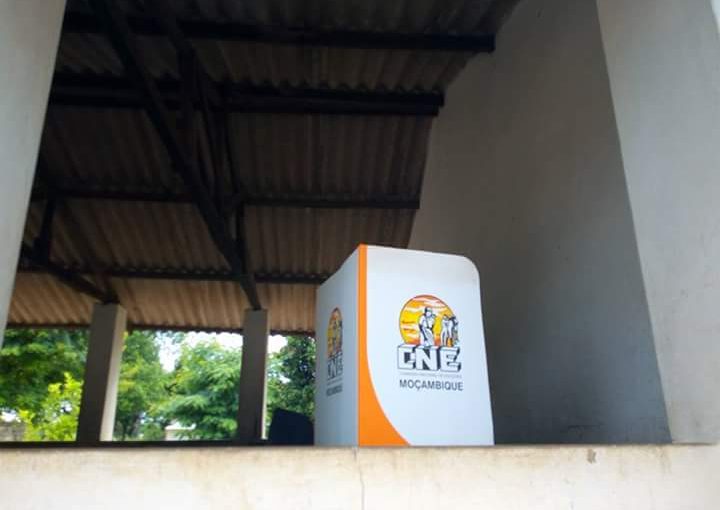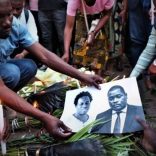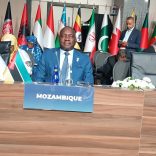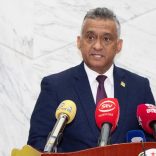Mozambique: Mondlane files complaint with PGR about attacks on supporters
Mozambique elections: CNE finds 572 extra votes; registration opens – By Joseph Hanlon

The CNE found an extra 572 votes which were not counted in Nampula and apparently added them to the result without saying anything.
The counting procedure is that the provincial elections commission counts the votes and issues a result, known as the intermediate result – apuramento intermedio. The National Election Commission looks again at all invalid votes (nulos) and any it considers valid are added to the intermediate results, and these are the final results, which are submitted to the constitutional council. But the CNE can, and in the past has, in secret and without explanation, changed the intermediate results.
It appears that the CNE has changed the intermediate results of the 14 March Nampula second round, perhaps by adding results of one or two polling stations.
The table in the attached pdf compares the two sheets – both say they are the intermediate result. In its intermediate result, the Nampula provincial elections commission said 96,398 people voted. But the CNE in its version of the intermediate results says 96,970 people voted.
The two official results sheets are posted on bit.ly/2G9V3CR.
Registration opens with problems but high turnout
There was a high turnout in the first week of electoral registration, but also the usual set of equipment problems and inadequate training of registration brigades. STAE spokesperson Claudio Langa said that in the first week (19-25 March) 647,638 people registered.
Registration continues until 19 May, with registration posts open from 08.00 to 16.00, including Saturdays, Sundays and holidays. The Mozambicans system requires a new registration every five years. There will be local elections on 10 October in 53 municipalities and national elections in October 2019. Registration this year is only in the districts containing the 53 municipalities, which are estimated to contain 8.5 mn people of voting age. That will require registering 1 million people
per week, so the 647,638 in the first week was not sufficient, and numbers will have to increase. Registration will also have to be faster. It is estimated that to register everyone, the process should take just 3 minutes per voter. EISA (Electoral Institute for Sustainable Democracy in Africa) had observers only in the municipalities themselves, and estimated that registration was taking 5 minutes per person – not fast enough. The full EISA report is available on http://bit.ly/2GxFnbY
Equipment problems
EISA reported that 34% of registration posts visited suffered an interruption that required a visit of a STAE technician. Perhaps the most common problem was a lack of toner for the printers for voters cards. This caused late opening on the first day at a number of polling stations, and many people in queues gave up. EISA estimated that 10% of the people who registered did not get a voters card, and must return later to collect it.
What ID document is required?
The registration law says that people can register if they have some sort of identity document, including “any document with an up to date photograph, signature, or fingerprint that is normally used for identification, such as a driver’s licence, work card, or student card.” EISA observers discovered that people were being turned away if the documents were out of date.
People often use their voters card as an identity document and every five years simply present their old voters card to apply for a new one. The old voters card is no longer valid, but what was always seen as important was the photo as confirmation of identity. This continues in many places, but some registration brigades are now rejecting photo documents which have formally expired.
Perhaps this needs a ruling from the CNE.
Cards missing information
During the first two days some registration brigades did not put the complete address of the voter on the card, including only the province, but not city, neighbourhood, and house. STAE spokesperson Claudio Langa said this was due to inadequate training, but the data was not essential because the full address was contained in the computer.
Renamo protested, and said this was a trick to allow people who did not live in a municipality to register and vote. On 22 March STAE issued an instruction that the full address must be on the voters card.
Problems for the foreign born
The software used by the registration brigades requires them to pick a birthplace of the voter from a list of Mozambican locations. But it was soon discovered that there were no foreign locations, so Mozambicans born outside the country had trouble registering.
At the Instituto Industrial 1o de Maio in Maputo the team refused to register a Dutch-born Mozambican. Telephone calls to higher level eventually led to the instruction that his birthplace should be given as Distrito Municipal de Kampfumo, Maputo, were he lives.
Spokesperson Langa said is was impossible to add all foreign countries to the list on the computer, and brigades had to resolve the problem as best they could – in effect foreign born Mozambicans had to choose a Mozambican birthplace.
Voters card improved
The voters card is printed on paper and then sealed in plastic, leading to complaints about lack of durability. STAE wanted to introduce plastic cards similar to credit cards, but the funding was not available. But there have been some improvements, notably a bar code that can be read by a scanner and a much improved photograph of the voter.
Parties active in monitoring
Parties have monitors at most registration posts. In the municipalities EISA found Frelimo in 91.5% of registration posts, Renamo in 86% and MDM in 61%. In Nampula the citizens list AMUSI was present in half of posts.
The three main parties all cited problems. For Frelimo, Julio Manhica of the Central Committee subcommittee for parliamentary affairs, said there were cases where Frelimo members went to register but could not because their was only one registration brigade member present. This happened at Escola Secundaria da Polana, in the centre of Maputo.
MDM spokesperson Sande Carmona said that in Alto Molocue, Zambezia, Frelimo was forcing teachers to register at a single registration post, rather than at the one nearest their home as set out in the law. He also accused Frelimo of having up to five party delegates at some polling stations in Beira.
Renamo issued a statement yesterday (27 March) which highlighted the power problems caused by inadequate batteries and solar panels, and the lack of fuel for generators. Where there was electricity, registration staff were having to use their own money to make payments in prepay “Credelec” meters. The full Renamo statement is on http://bit.ly/2GdPVO4 In an interview with VOA (20 March) Renamo head Afonso Dhlakama said this was happening particularly in areas where Renamo was strong, notably Sofala.
Renamo also repeated its frequent claims that Frelimo registers non-resident people in the municipalities in order to increase their vote in local elections. But this time they gave more detailed examples, claiming that:
+ In Nampula city two youths from Montepuez were caught trying to register,
+ A group of teachers had been transported by a Frelimo party secretary from Macuzi, Namacurra to register in Mocuba and two were caught, and
+ A Frelimo lorry was taking people from Derre to register in Milange, Zambezia.
There is no independent confirmation of these accusations.
One quarter of ‘invalid’ votes were actually OK
All ballot papers considered invalid (nulo) at the polling station are sent to Maputo to be reconsidered by the National Elections Commission. A vote is valid if the intent of the voter is clear, but the issue is debated when an X or fingerprint spreads onto the surrounding candidate. Polling station officials tend to be too strict, and in the 14 March Nampula second round the CNE accepted 23% of “invalid” votes to actually be valid.
In a few cases one party protests the ruling at the polling station, and those ballots are also checked in Maputo. The distribution of accepted ballot papers is detailed in the attached pdf of this newsletter and was similar to the total vote, and did not change the outcome. Final results still need to be approved by the Constitutional Council.
By Joseph Hanlon












Leave a Reply
Be the First to Comment!
You must be logged in to post a comment.
You must be logged in to post a comment.